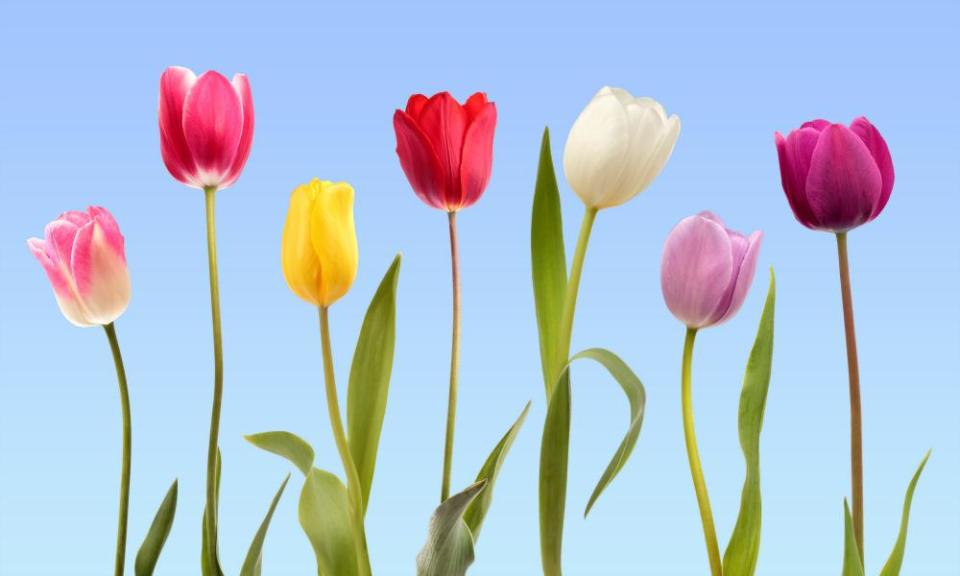Tulips are a must for spring – but go sustainable to keep it classy

Our wedding started and ended at our house. I like my home comforts and, despite my husband’s previous protestations that we were not having an afterparty, one nevertheless unfolded in our living room.
The photographer ventured into the garden. It was mid-April, a far nicer day than we’d dared hope for, and the tulips were out. We went on our honeymoon afterwards; had she not taken photos of them, I would have missed the lot.
I enjoy a tulip. Easily identified, pleasingly reliable, come in every colour under the sun: no wonder they’ve got their own emoji. It feels as if they’ve had a particularly florid few years, encouraged, I think, by the pandemic and our desperate need for something, anything, that offered a brief hit of joy. If you were clever enough to plant some in autumn 2019, you would have enjoyed a colourful riot as lockdown set in. If, like me, you weren’t (I’d expected to have moved out of my balcony flat by then), you may have become dependent on your local florist.
If you would rather have some in your garden, you may be able to buy potted tulips that are gearing up to flower over the next few weeks. It’s a quick fix but expensive, and one I’d recommend you resist so that you can spend your flower funds on bulbs come August instead, when you can order exactly what you like and in great quantity for only a few pence per bulb.
It’s normal to ask a grocer or butcher where our food comes from – we should do the same with flowers
Tulips are best planted from November onwards (mine went in days before Christmas last year), where, in either the pots or the ground, they will gradually emerge with delicious anticipation before exploding for a few weeks. They like a sunny spot but they last longer with a little shade and will put up with more of it than people realise; they’re also very tolerant of containers as long as they’re not subjected to waterlogged soil.
If you haven’t time for potted tulips, now is a good time to make a friend of your florist – especially if they grow or stock British-grown flowers. You can pick up bunches of supermarket tulips cheaply at the moment, but that’s because they are grown in water, under LED lights, rather than in the soil under daylight. Swaddled in single-use plastic, these bargain blooms lack the size, colour variation and beauty of those from more sustainable farms. A sustainably grown tulip will dwarf a supermarket one, with supermodel-leggy stems and generous, teacup-sized flowers.
Related: Dwarf irises bring colour and glamour to the start of spring
It has become normal to ask our grocer or butcher where our food comes from, but we rarely do it with flowers – and we should, as they can have an equally daunting carbon footprint. But there’s also an unbeatable elegance to consciously grown, seasonal flowers. Not only are you buying them at their best, but they fade with style, too. We’ve thankfully moved away from the trend for stiff, straight stems and towards a more natural celebration of Dutch master-like opulence. When I have tulips in a vase, I enjoy them until every petal curls up and drifts towards the tabletop, their bright colours vanishing into deeper, beautiful decay.

